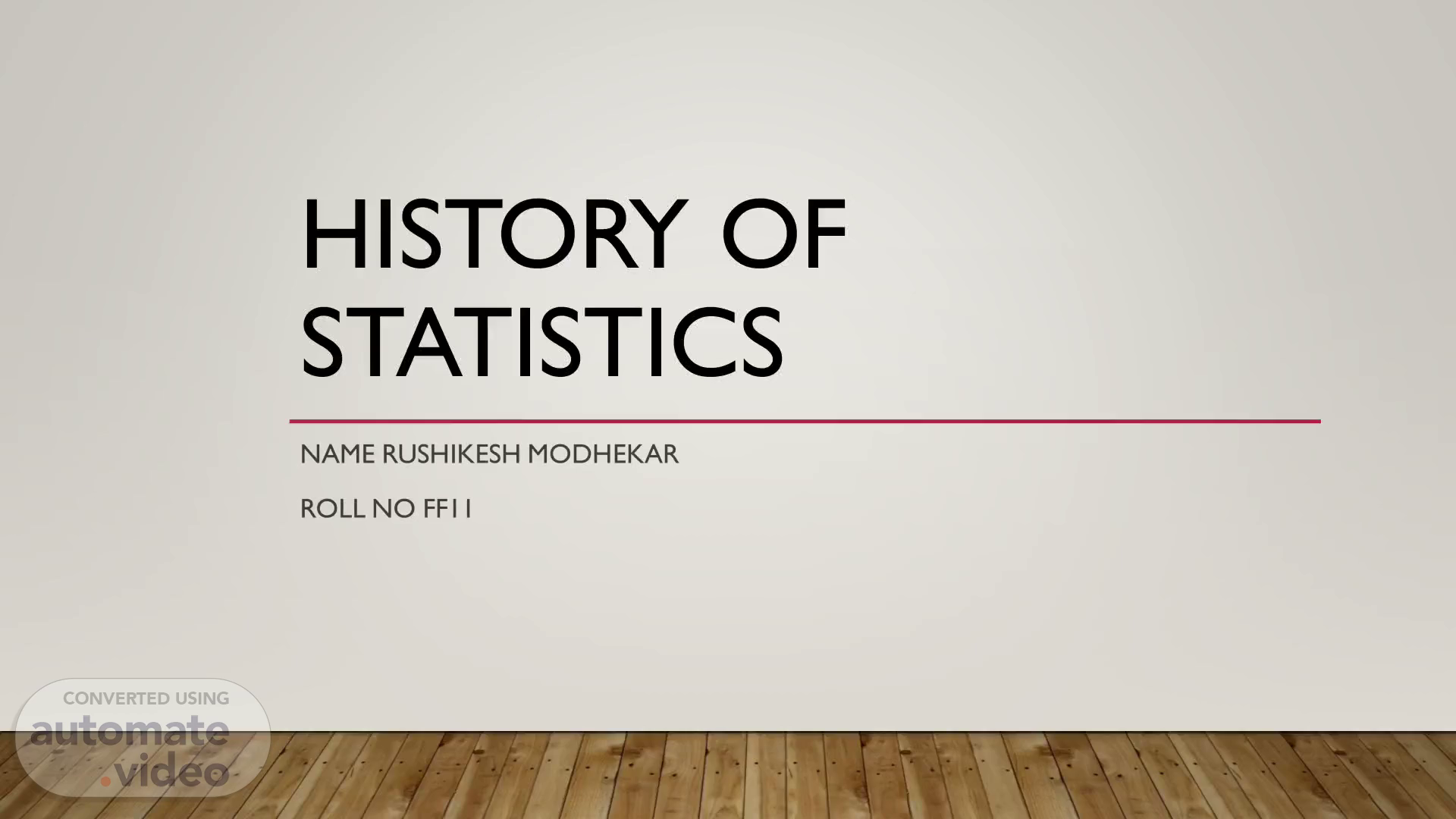
history of statistics 1
Scene 1 (0s)
[Audio] HISTORY OF STATISTICS NAME RUSHIKESH MODHEKAR ROLL NO FF11.
Scene 2 (11s)
[Audio] INTRODUCTION Have you ever wondered how we use numbers to understand our world? That's what statistics is all about! In this presentation, we're going to take a fun journey through time to learn how people have been using statistics for a really long time Think of statistics as a magic key that helps us unlock secrets hidden in numbers. We'll discover how it all started, meet some cool people who made it happen, and see how it's still helping us today This simplified introduction should be engaging and easy to understand for a broad audience. You can continue to make the rest of your presentation similarly accessible and interesting.
Scene 3 (1m 21s)
[Audio] WHAT IS STATISTICS Statistics is the science of collecting, organizing, analyzing, interpreting, and presenting data. It's a crucial tool for understanding and making sense of information that comes in numerical or categorical form. In essence, statistics helps us uncover patterns, trends, and insights within data, making it a valuable resource for decision-making, research, and understanding the world around us. Whether it's in science, business, healthcare, or everyday life, statistics plays a fundamental role in drawing conclusions and making informed choices based on data.
Scene 4 (2m 22s)
[Audio] BIRTH OF OFFICIAL STATISTICS Ancient Roots: Ancient civilizations, like the Egyptians and Romans, had their own versions of official statistics to help them manage their empires and resources Government Counts People and Stuff: Imagine the government needs to know how many people live in a country or how much food there is. They started keeping official records of these things. This is where "official statistics" began. Counting for Control: Governments used these records to make decisions, like collecting taxes, planning for emergencies, and more. It was a way to keep things in order..
Scene 5 (3m 29s)
[Audio] EARLY BEGINNINGS Ancient Civilizations: Statistics can be traced back to ancient civilizations such as Egypt and Mesopotamia. They used rudimentary methods for data collection, like censuses, to keep records of their populations, resources, and trade. Use of Tallies: One of the earliest methods was tally marks, where people made notches or marks on items to keep track of quantities. This basic form of counting was a precursor to more advanced statistical methods. These early beginnings set the stage for the more sophisticated statistical methods and theories that would develop over time. It's fascinating to see how rudimentary data collection and counting methods in ancient civilizations laid the groundwork for the modern field of statistics.
Scene 6 (4m 49s)
[Audio] BRIDGING THE CENTURIES IN STATS 19th Century Advancements: In the 19th century, stats was on a roll. People like Quetelet and Galton used it to study human traits and behaviors. It was like the dawn of "social science." Birth of Biostats: Francis Galton played a big role in this. He was like a detective, using statistics to explore how traits are passed from one generation to the next. 20th Century Revolution: As the 20th century began, statistics got a major upgrade with the works of Fisher, Pearson, and Neyman. They made stats more powerful and precise, like a superhero with new abilities Stats for Research: Stats became a crucial tool in research. It's like having a magnifying glass to zoom in on the tiny details of data and discover hidden truths..
Scene 7 (6m 19s)
[Audio] CONCLUSION Unlocking the Past: We've journeyed through time to explore the fascinating history of statistics. From simple counting and games of chance to official records and the Enlightenment Era, we've seen how statistics evolved A Powerful Tool: Statistics isn't just about numbers; it's a superpower for understanding our world. It's used in science, business, and more to uncover hidden patterns and make informed decisions Join the Stats Adventure: Whether you're a student, a researcher, or someone curious about the world, statistics is a journey you can embark on. It's a tool that empowers us to explore, understand, and shape our future.